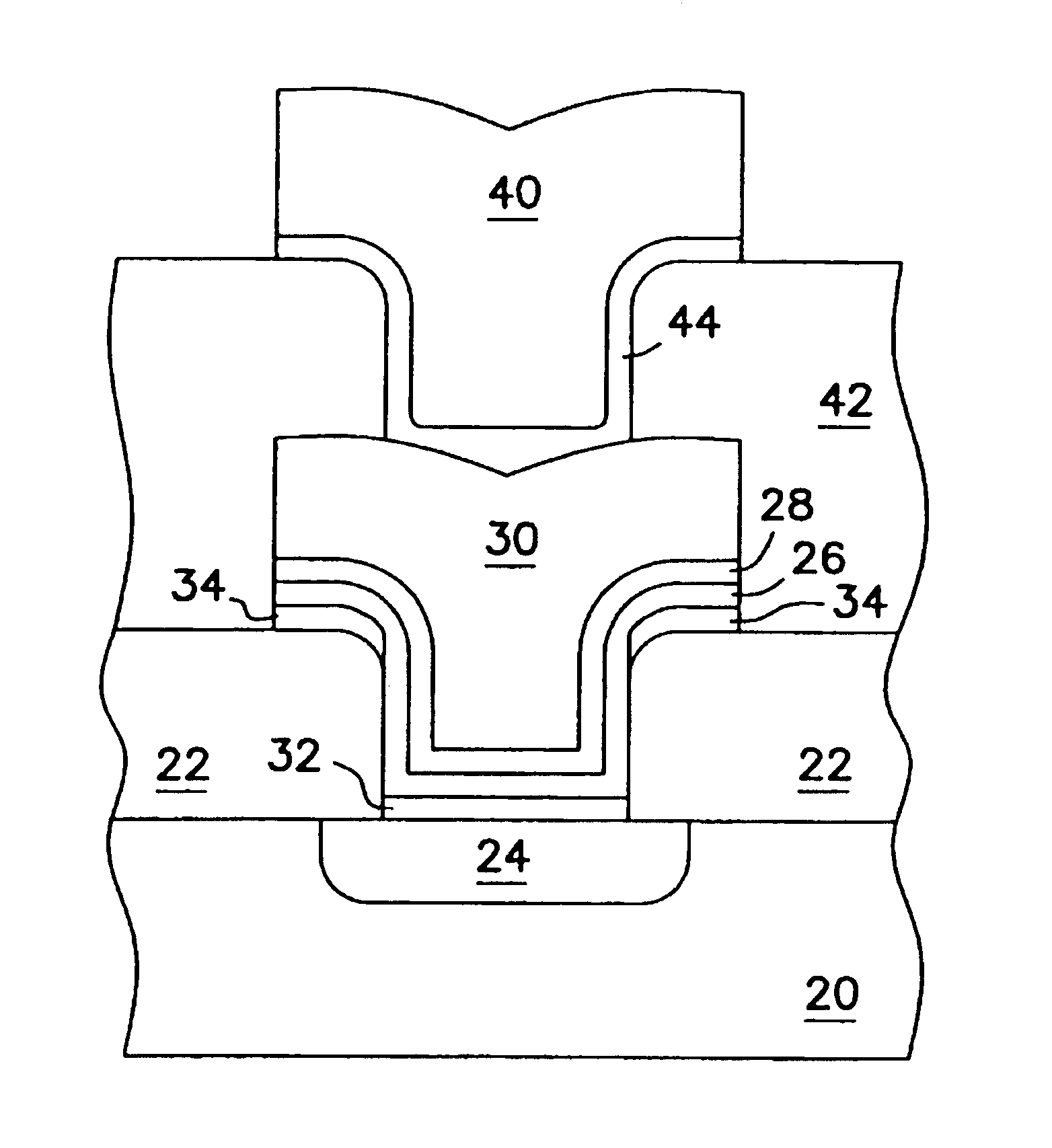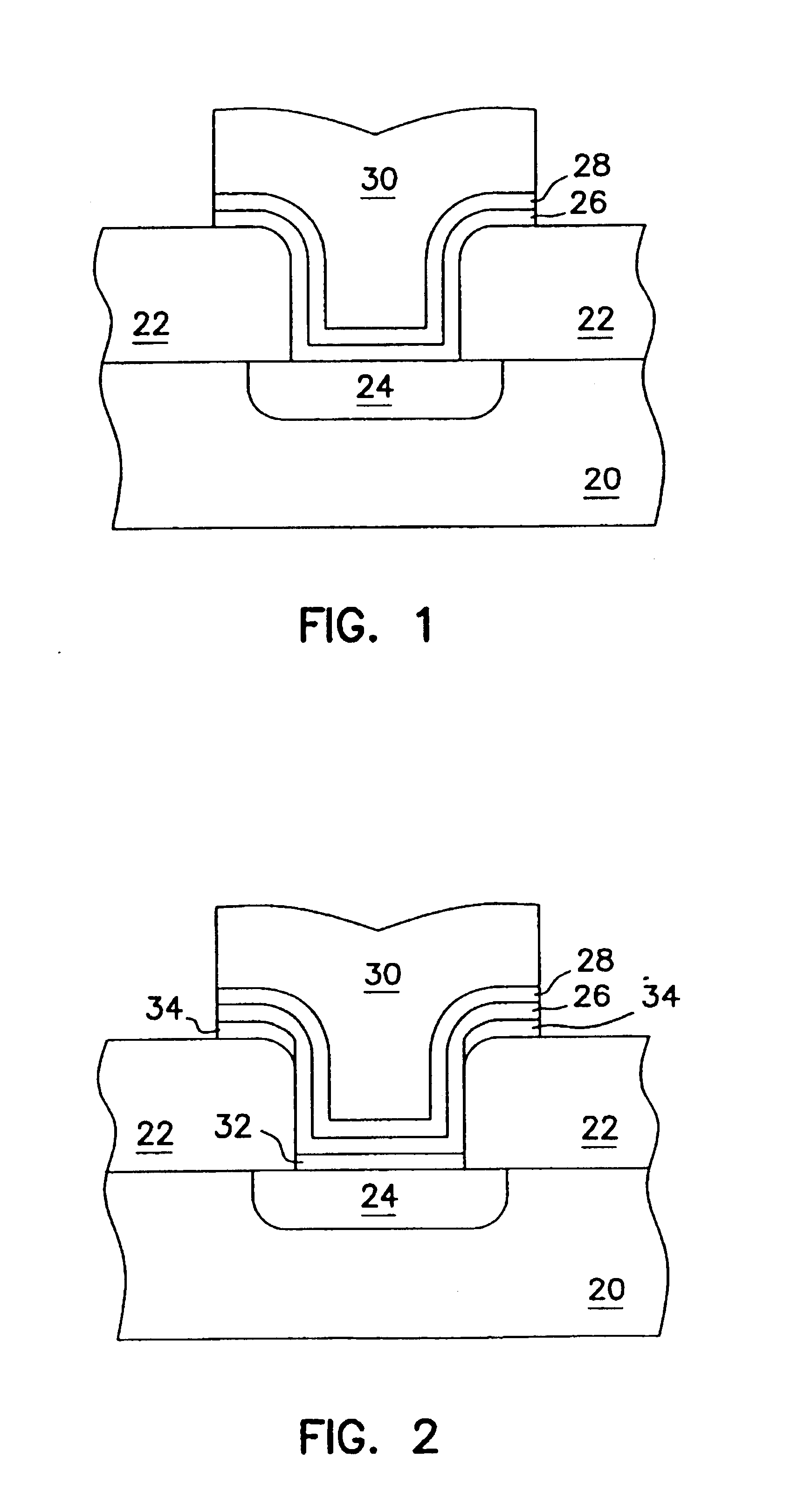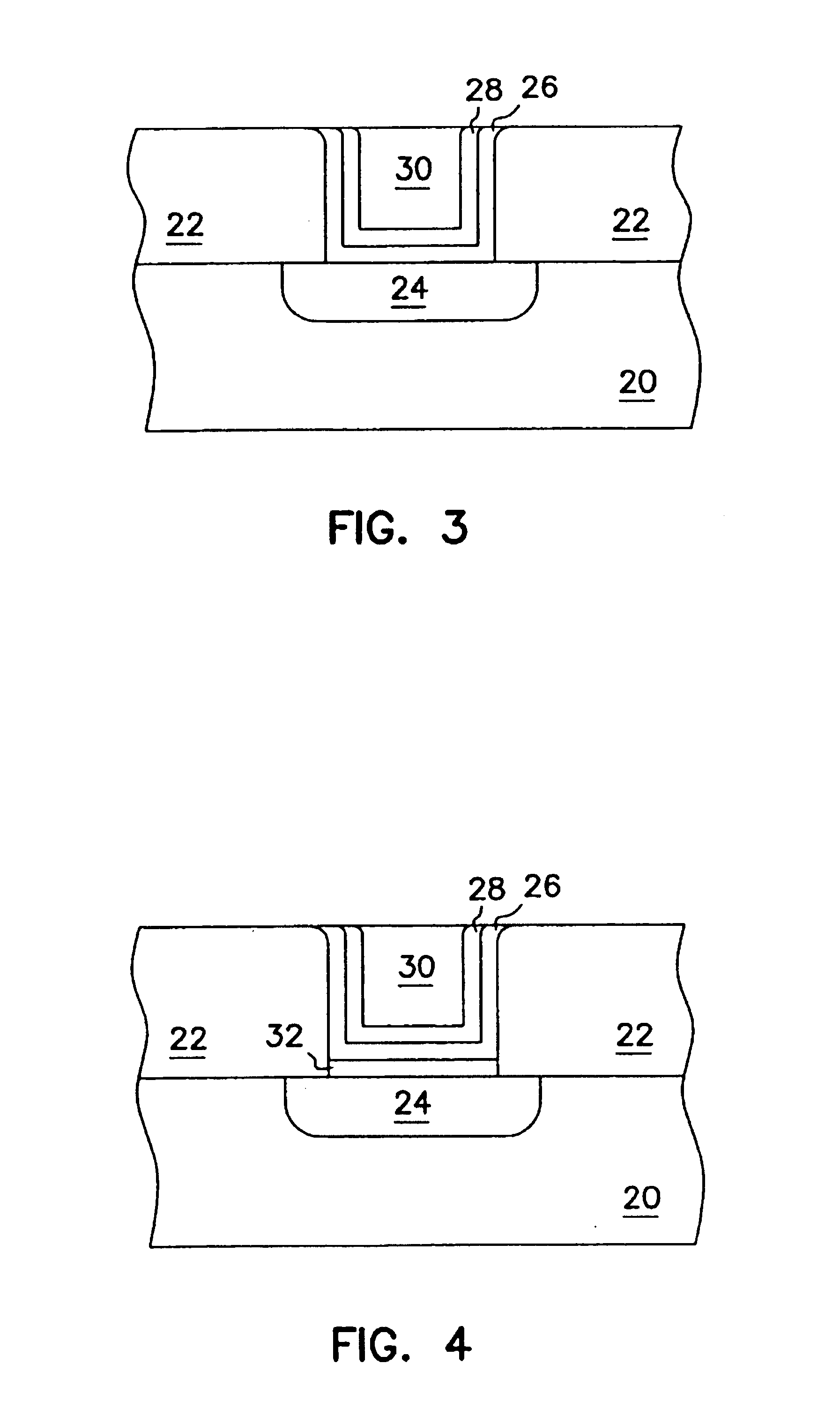Small grain size, conformal aluminum interconnects and method for their formation
a technology of aluminum interconnects and conformal aluminum, applied in the direction of semiconductor devices, semiconductor/solid-state device details, electrical apparatus, etc., can solve the problems of difficult to obtain adequate step coverage, non-conformal layers, and unsatisfactory interconnects, so as to improve the ohmic characteristics of the contact, diffuse easily through the interconnect structure, and reduce the resistance contact
- Summary
- Abstract
- Description
- Claims
- Application Information
AI Technical Summary
Benefits of technology
Problems solved by technology
Method used
Image
Examples
Embodiment Construction
[0017]In the following detailed description of the preferred embodiments, reference is made to the accompanying drawings which form a part hereof, and in which is illustrated by way of specific embodiments in which the invention may be practiced. It is to be understood that other embodiments may be utilized and that structural or logical changes may be made without departing from the scope of the present invention. For example, the terms wafer and substrate used in the following description include any semiconductor-based structure. Wafer and substrate are used interchangeably to refer to supporting semiconductor structures 20 during processing, as illustrated in FIGS. 1 to 4. Both are to be understood as including silicon-on-sapphire (SOS) technology, silicon-on-insulator (SOI) technology, doped and undoped semiconductors, epitaxial layers of a silicon supported by a base semiconductor, as well as other semiconductor structures well known to one skilled in the art. Furthermore, whe...
PUM
| Property | Measurement | Unit |
|---|---|---|
| grain size | aaaaa | aaaaa |
| thickness | aaaaa | aaaaa |
| thickness | aaaaa | aaaaa |
Abstract
Description
Claims
Application Information
 Login to View More
Login to View More - R&D
- Intellectual Property
- Life Sciences
- Materials
- Tech Scout
- Unparalleled Data Quality
- Higher Quality Content
- 60% Fewer Hallucinations
Browse by: Latest US Patents, China's latest patents, Technical Efficacy Thesaurus, Application Domain, Technology Topic, Popular Technical Reports.
© 2025 PatSnap. All rights reserved.Legal|Privacy policy|Modern Slavery Act Transparency Statement|Sitemap|About US| Contact US: help@patsnap.com



